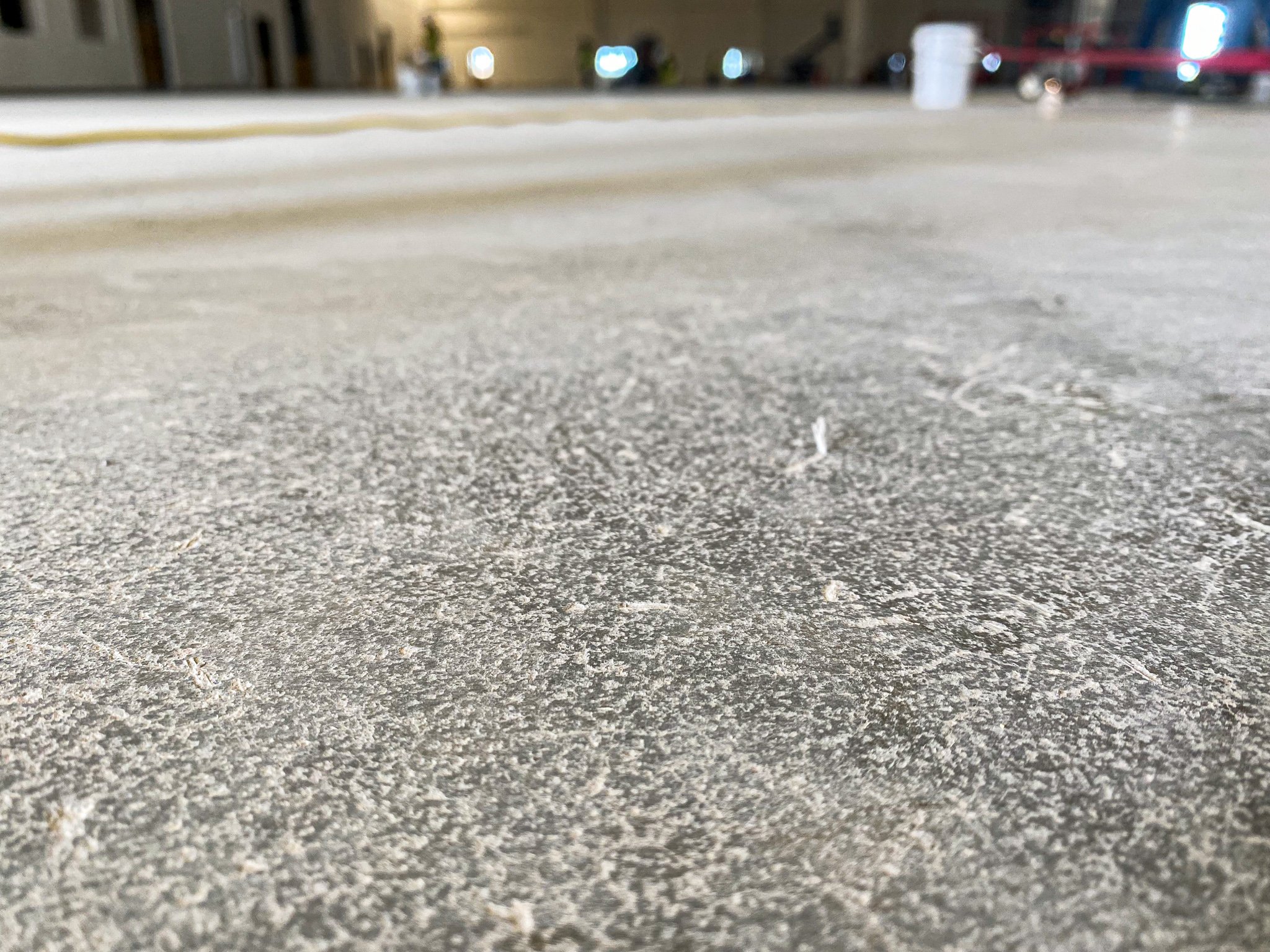Fiber Reinforced Concrete
There are two types of fiber reinforcement in concrete, microfibers, and macrofibers. Microfibers are generally used to minimize plastic shrinkage cracking due to wind, heat, and direct sun. Macrofibers are generally larger compared to microfibers and are made of a stiff material such as metal, plastic, or fiberglass and are designed to provide stronger and more durable concrete. Our interior flooring contractors are highly skilled in this area.
Fiber reinforced concrete can add cost for additional labor and materials to flooring applications. Our sales team is proactive during the new construction bidding process by confirming the type of concrete substrate to provide the customer with the proper flooring system. We are confident in our interior flooring contractors to get the job done.
Fiber reinforced concrete appears normal upon observation until the surface is prepared for adhesion. When mechanically prepared, the fibers are exposed and easily noticeable. At this point, no additional mechanical preparation such as sweeping, grinding, burning, or sanding will eliminate the fibers in the reinforced concrete.
Our experience with fiber reinforced concrete has shown that it can create a surplus of issues if not treated properly in the preparation and application phase of a resinous flooring system. The fibers become very sharp and extremely dangerous when epoxy or urethane is applied and cured, as well as causing air entrapment and creating finishing issues.
With over 30 years of experience in the industry, we have established proven solutions when encountering fiber reinforced concrete. Our interior flooring contractors provide a more robust system such as an epoxy or urethane mortar system will help encapsulate the fibers and provide a smooth surface. Regardless of the type of concrete substrate in your facility, T.W. Hicks can provide the best solution for your needs.

